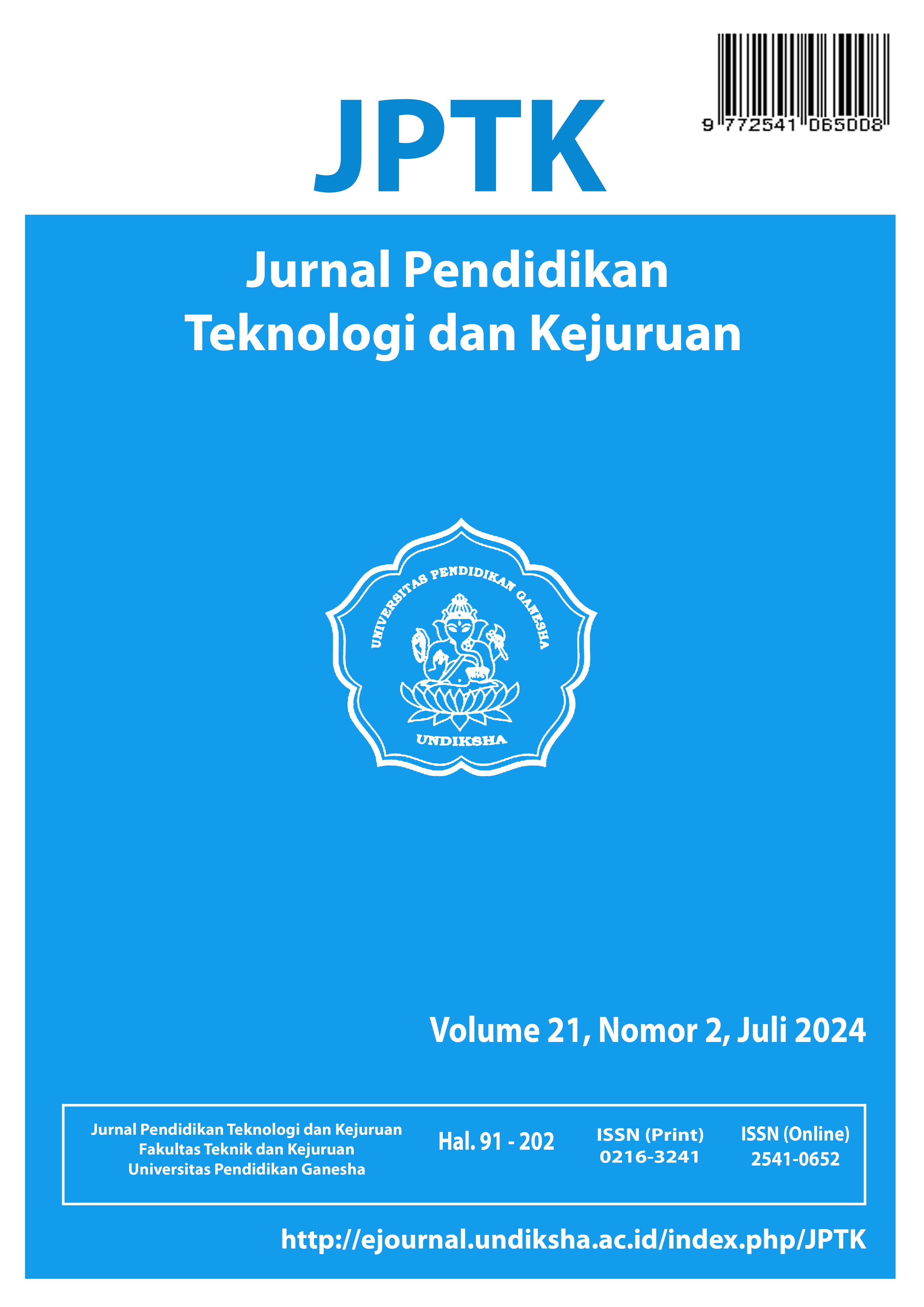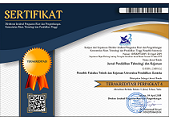ESTIMASI BEBAN LISTRIK JANGKA PENDEK MENGGUNAKAN TIME SERIES NARX PADA BANGUNAN BERTINGKAT
DOI:
https://doi.org/10.23887/jptkundiksha.v21i2.76928Keywords:
Time Series NARX , Energy Forecasting , Energy Consrvation, Efficiency EnergyAbstract
Penggunaan energi sebagai komponen utama dalam menjalankan aktivitas dari waktu ke waktu semakin bertambah, khususnya untuk energi listrik.Dari pekerjaan industri, komersil dan pendidikan. Menurut OECD Institusi pendidikan tinggi dan komersil menggunakan 35% - 45% lebih tinggi energi listrik daripada hunian dan perkantoran. Namun dalam penggunaan energi listrik terbilang belum secara kesuluruhan dan tidak efisien. Salah satu penyebab dari penggunaan energi yang tidak efisien adalah tidak memperhitungkan beban yang digunakan dan juga energi harian yang digunakan oleh komponen atau aktivitas yang dilakukan sehingga perlu adanya solusi yang tepat untuk memperbaiki kondisi tersebut. Salah satu cara yang dapat menggunakan metode Time Series NARX. NARX adalah salah satu metode dari Time Series Neural Network yang menggunakan penundaan agar menghasilkan akurasi yang diinginkan .Pada penelitian ini diharapkan mendapatkan hasil maksimal dan efisien serta mengurangi penggunaan energi listrik yang berlebihan. Hasil dari penelitian ini mendapatkan MAPE sebesar 16,08% dan RMSE sebesar 20,96
Kata kunci: Time Series NARX , Estimasi Beban , Konservasi Energi , Efisiensi Energi
References
N. Somu, G. Raman M R, and K. Ramamritham, “A deep learning framework for building energy consumption forecast,” Renewable and Sustainable Energy Reviews, vol. 137, p. 110591, Mar. 2021, doi: 10.1016/j.rser.2020.110591.
M. Pavlicko, M. Vojteková, and O. Blažeková, “Forecasting of Electrical Energy Consumption in Slovakia,” Mathematics, vol. 10, no. 4, p. 577, Feb. 2022, doi: 10.3390/math10040577.
G. Tziolis et al., “Direct short-term net load forecasting in renewable integrated microgrids using machine learning: A comparative assessment,” Sustainable Energy, Grids and Networks, vol. 37, p. 101256, Mar. 2024, doi: 10.1016/j.segan.2023.101256.
G. Chitalia, M. Pipattanasomporn, V. Garg, and S. Rahman, “Robust short-term electrical load forecasting framework for commercial buildings using deep recurrent neural networks,” Applied Energy, vol. 278, p. 115410, Nov. 2020, doi: 10.1016/j.apenergy.2020.115410.
G. R. Yang and X.-J. Wang, “Artificial Neural Networks for Neuroscientists: A Primer,” Neuron, vol. 107, no. 6, pp. 1048–1070, Sep. 2020, doi: 10.1016/j.neuron.2020.09.005.
C. Chen et al., “Forecast of rainfall distribution based on fixed sliding window long short-term memory,” Engineering Applications of Computational Fluid Mechanics, vol. 16, no. 1, pp. 248–261, Dec. 2022, doi: 10.1080/19942060.2021.2009374.
M. Wei, M. Ye, J. B. Li, Q. Wang, and X. Xu, “State of Charge Estimation of Lithium-Ion Batteries Using LSTM and NARX Neural Networks,” IEEE Access, vol. 8, pp. 189236–189245, 2020, doi: 10.1109/ACCESS.2020.3031340.
A. Wunsch, T. Liesch, and S. Broda, “Groundwater Level Forecasting with Artificial Neural Networks: A Comparison of LSTM, CNN and NARX”.
E. Skomski, J.-Y. Lee, W. Kim, V. Chandan, S. Katipamula, and B. Hutchinson, “Sequence-to-sequence neural networks for short-term electrical load forecasting in commercial office buildings,” Energy and Buildings, vol. 226, p. 110350, Nov. 2020, doi: 10.1016/j.enbuild.2020.110350.
Y.-C. Chen, S. S. Berutu, and Y.-H. Wang, “Smart Meter Development for Cloud-Based Home Electricity Monitor System,” vol. 18, no. 4, 2020.
T. Serikov et al., “Application of the NARX neural network for predicting a one-dimensional time series,” EEJET, vol. 5, no. 4 (113), pp. 12–19, Oct. 2021, doi: 10.15587/1729-4061.2021.242442.
N. AL-Rousan and H. Al-Najjar, “A Comparative Assessment of Time Series Forecasting Using NARX and SARIMA to Predict Hourly, Daily, and Monthly Global Solar Radiation Based on Short-Term Dataset,” Arab J Sci Eng, vol. 46, no. 9, pp. 8827–8848, Sep. 2021, doi: 10.1007/s13369-021-05669-6.
Downloads
Published
Issue
Section
License
Authors who publish with the JPTK agree to the following terms:- Authors retain copyright and grant the journal the right of first publication with the work simultaneously licensed under a Creative Commons Attribution License (CC BY-SA 4.0) that allows others to share the work with an acknowledgment of the work's authorship and initial publication in this journal
- Authors are able to enter into separate, additional contractual arrangements for the non-exclusive distribution of the journal's published version of the work (e.g., post it to an institutional repository or publish it in a book), with an acknowledgment of its initial publication in this journal.
- Authors are permitted and encouraged to post their work online (e.g., in institutional repositories or on their website) prior to and during the submission process, as it can lead to productive exchanges, as well as earlier and greater citation of published work. (See The Effect of Open Access)












